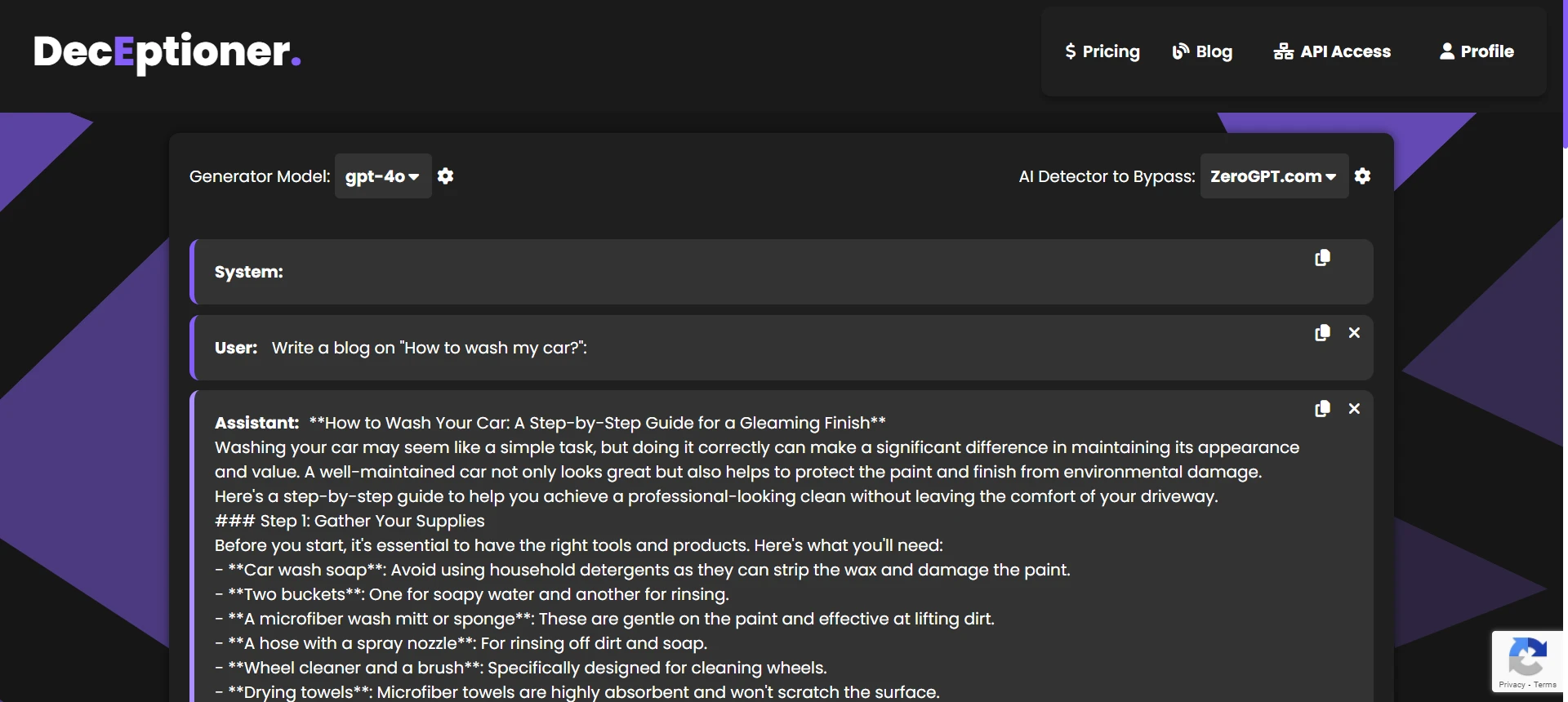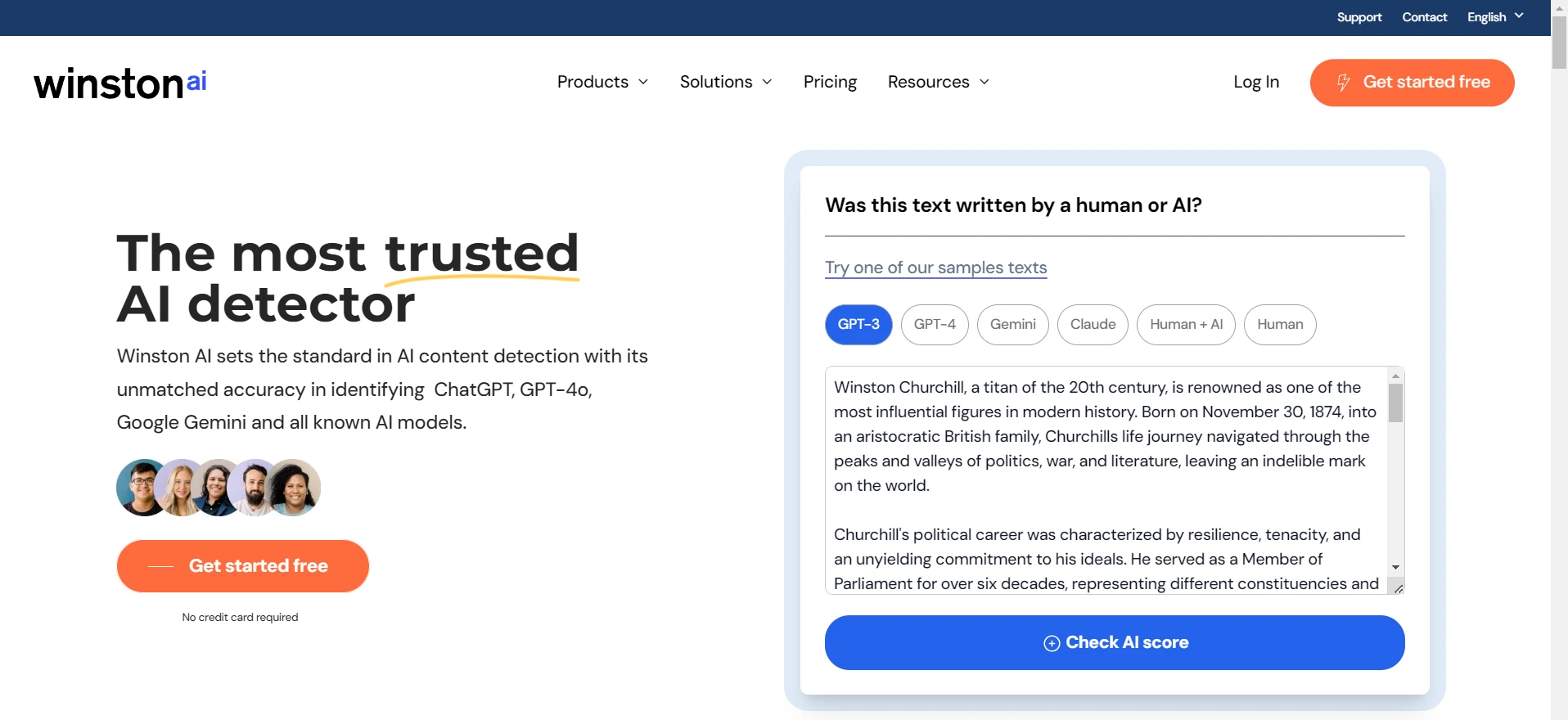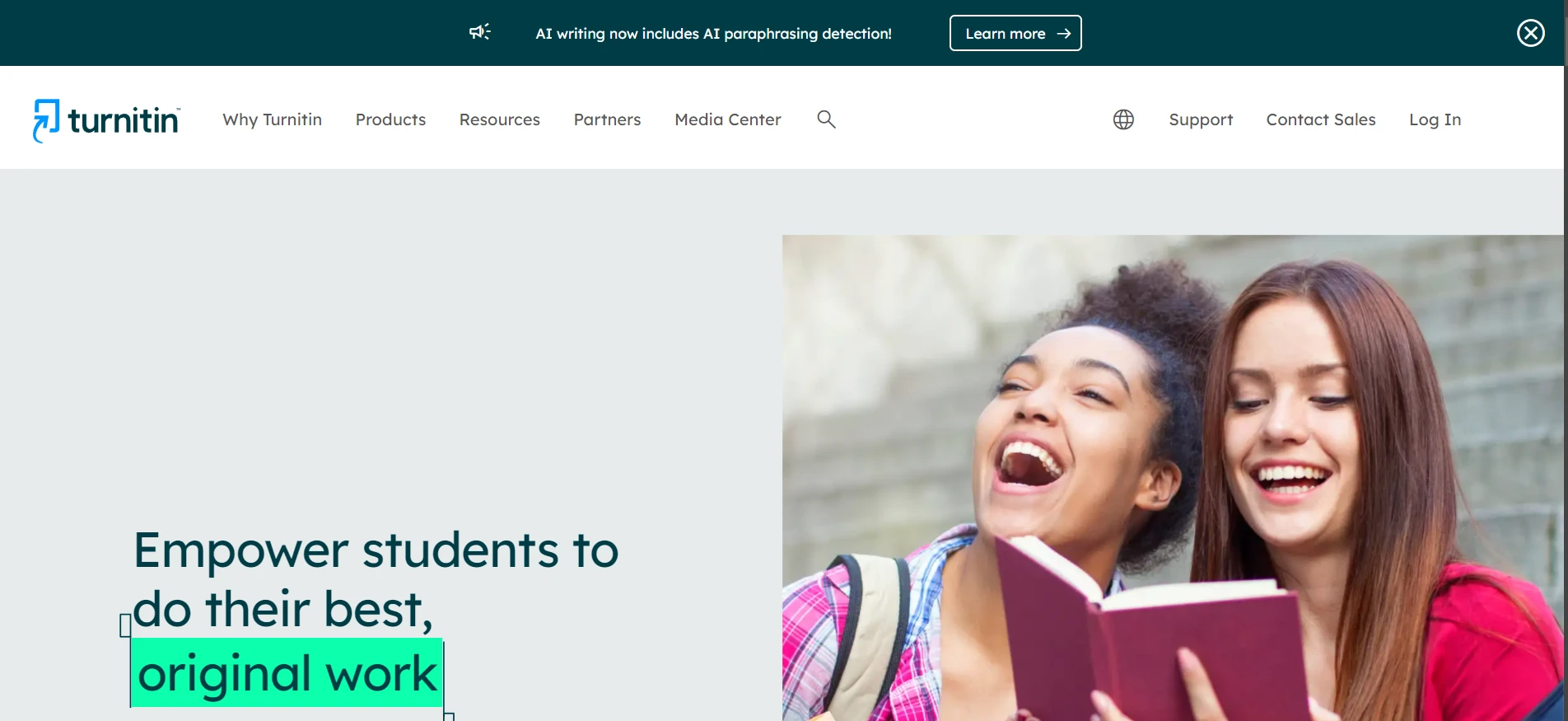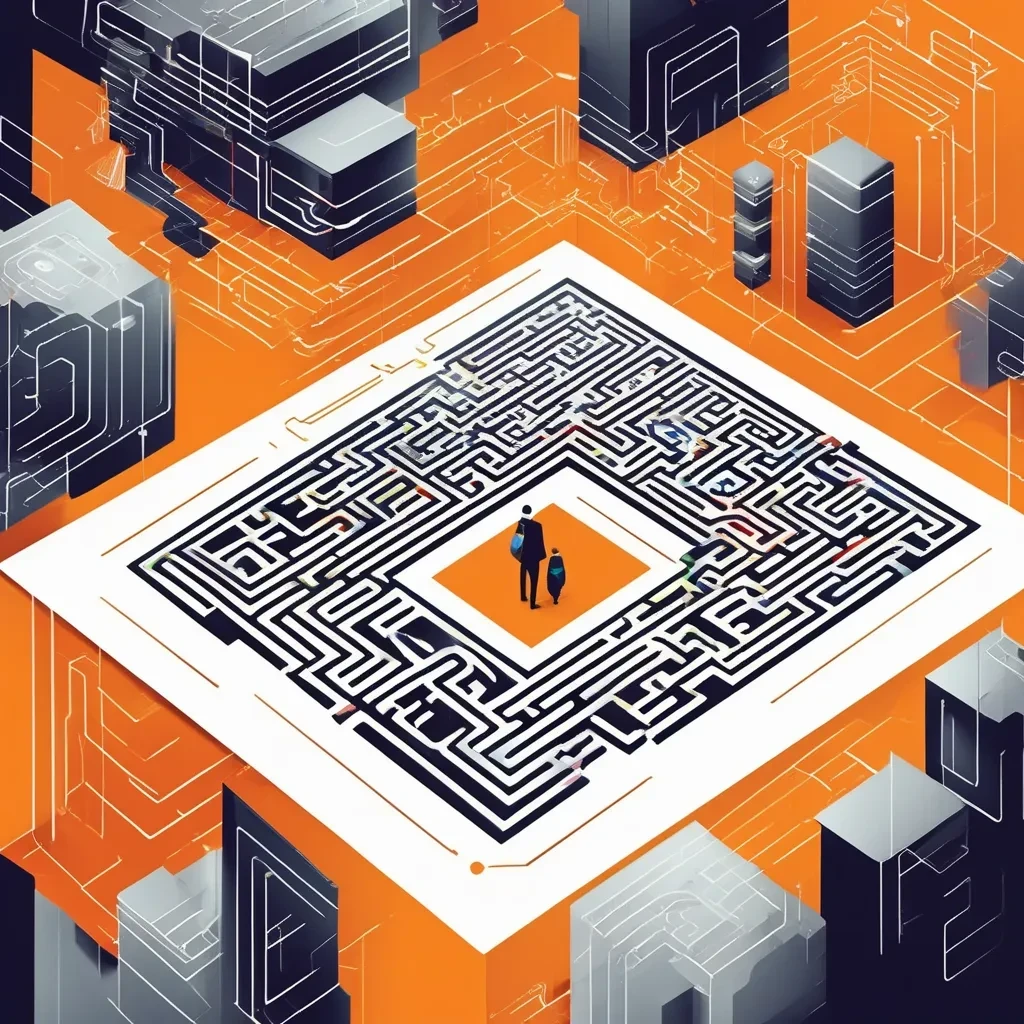As we all know ZeroGPT is an AI detection tool that tries to figure out if text is AI-written or human. But the question that often gets asked is “Does ZeroGPT give false positives?” The short answer is NO (at least based on a dataset that was tested). The longer answer is the devil lies in the details. Keep reading to know more about it.
Why ZeroGPT doesn’t flag human text as AI?
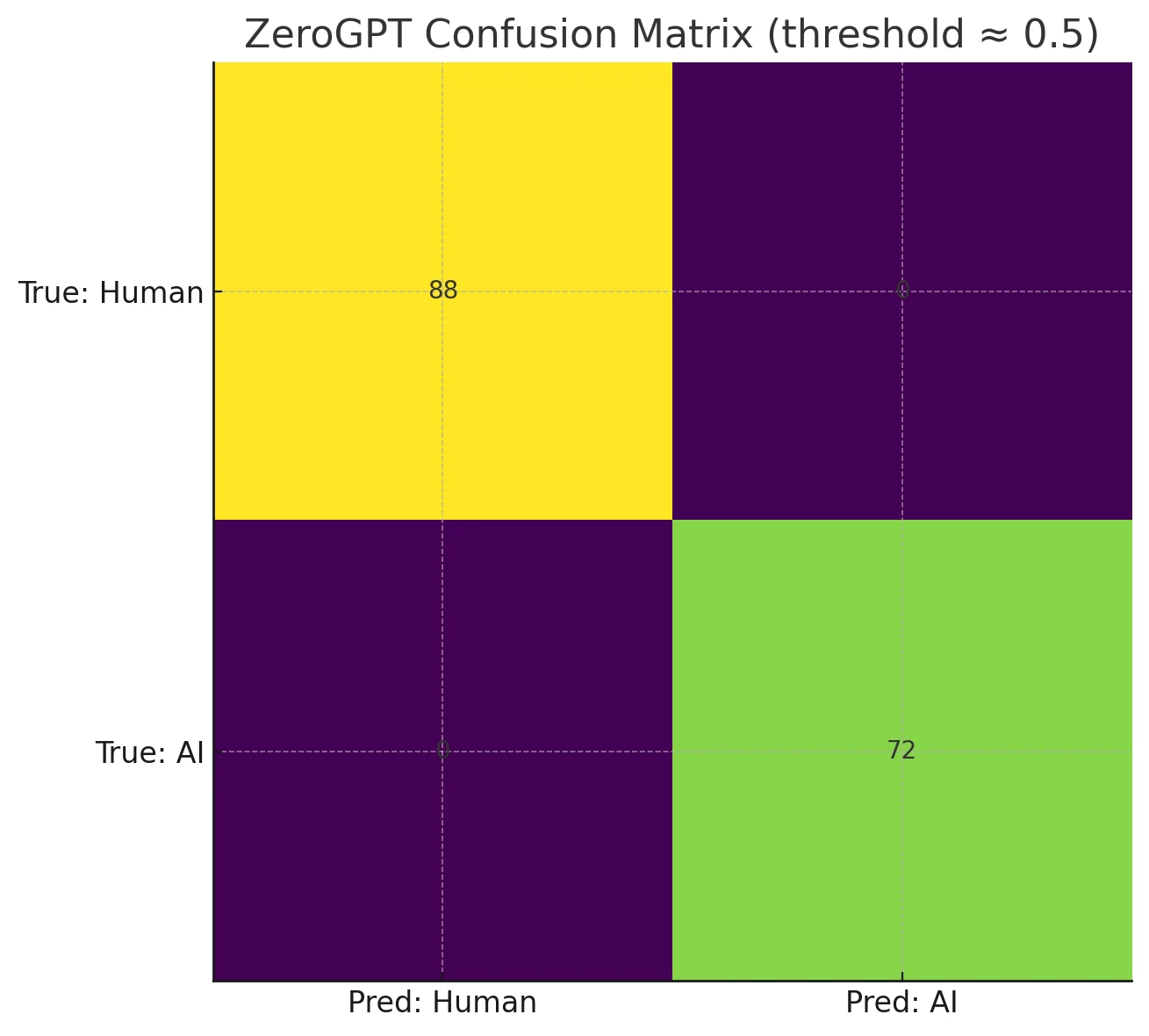
The simple answer is that it seems to use a very conservative approach for detecting AI. In a dataset of 160 pieces of text, ZeroGPT did not flag any single human text as AI. Hence, it had 0 false positives (meaning no human content was mislabeled as AI) on that sample. If your main concern is that you don’t want your hand-written stuff to be flagged incorrectly, then ZeroGPT’s got you covered—at least for those samples tested.
Also Read: How Accurate is ZeroGPT Compared to Turnitin?
But… it misses a lot of AI text!
This is where the bigger problem lies. We found that ZeroGPT missed many AI texts in the test. Basically, 65 AI texts were labeled as human by ZeroGPT. This is often referred to as false negatives. So, while it is super good at not labeling human text as AI, it’s not so great at catching everything AI. That’s a trade-off.
If your priority is to avoid punishing real human writers, ZeroGPT might be your best friend. If you want to catch every AI text out there, you might be disappointed.
Also Read: Can ZeroGPT Detect GPT5?
The confusion matrix
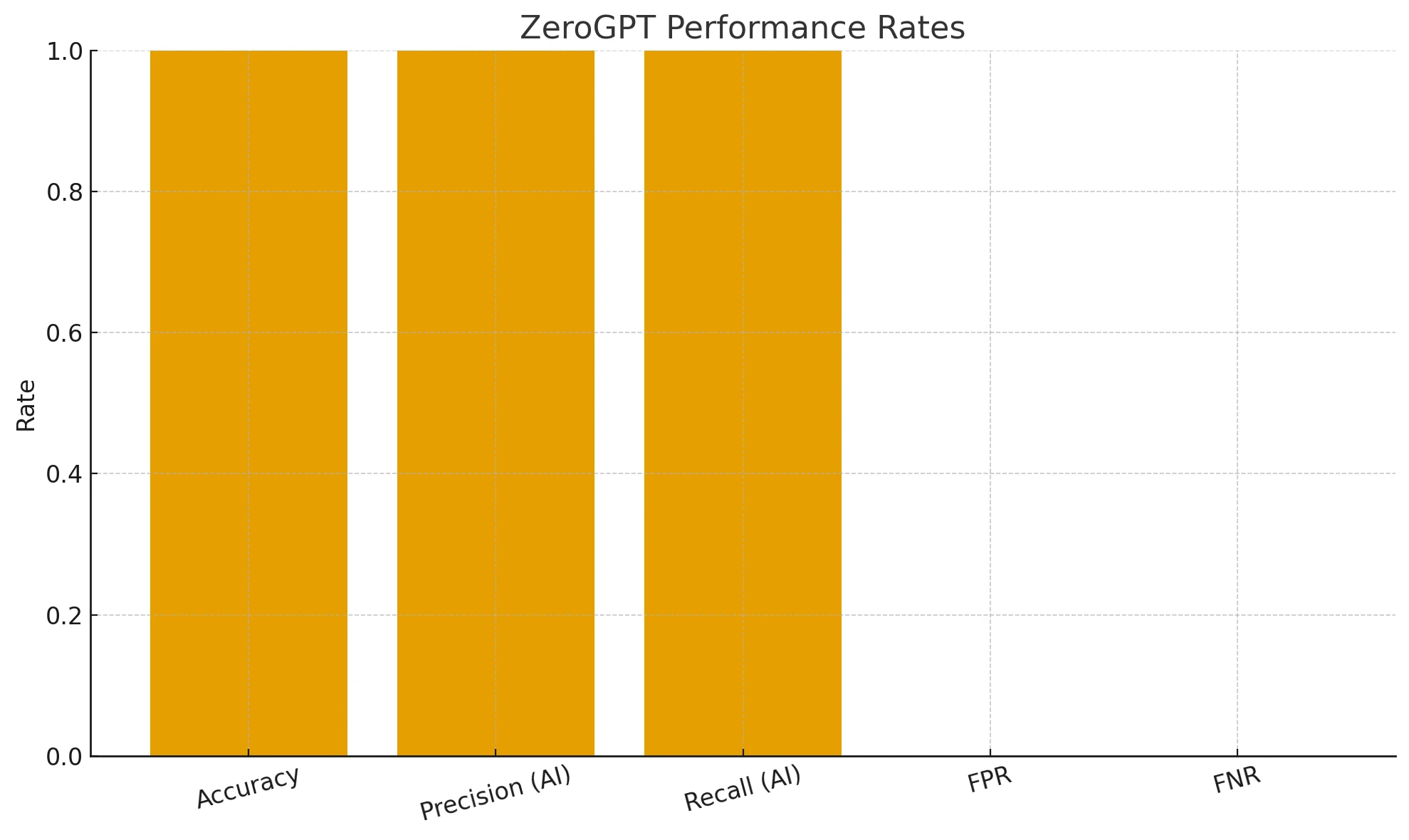
- True Negatives: 23 (23 human texts were labeled human)
- False Positives: 0 (0 human texts were mistakenly labeled AI)
- False Negatives: 65 (65 AI texts were passed off as human)
- True Positives: 72 (72 AI texts were correctly labeled as AI)
In the test, ZeroGPT had an impressive 0 false positives, but a significantly high number of false negatives.
Also Read: Can ZeroGPT Detect Deepseek?
Some key statistics
- Accuracy: 0.594 (about 59.4% correct classification overall)
- Precision (AI): 1.000 (100%. Every time it said “AI,” it was correct)
- Recall (AI): 0.526 (52.6%. It only caught about half of the AI texts)
Why is it so conservative?
ZeroGPT’s approach is oriented towards being really sure when it calls something AI. This means it does not make hasty “AI” calls. The good side: it rarely (or in this test, never) accuses a human. The bad side: a lot of AI texts slip by as “human” under its radar.
Does that matter for you?
- If your goal is to NOT accuse genuine people of cheating with AI, then ZeroGPT’s results on this dataset look amazing.
- If your goal is to identify all AI text out there, you will miss a lot, which might not be so great if you need maximum detection.
So, as you can see, it is a trade-off. Typically, if a detector is super strict about labeling something as AI, it might produce zero or few false positives, but it will let many AI texts go unflagged.
Also Read: Can ZeroGPT Detect Gemini?
What if I want more robust detection?
You might have to tweak the threshold (if ZeroGPT provides a numeric score in the future) or use multiple detectors in an ensemble (like combining ZeroGPT with other tools). Another strategy is to do a manual review after ZeroGPT’s verdict. Some people rely on additional signals such as writing style checks, metadata analysis, or just plain old reading the text carefully.
Remember:
Always test on your own data. AI detectors perform differently on different types of content. The dataset used here had 160 samples, and all these results might vary if you have longer texts, different prompts, or specialized writing styles. So the biggest takeaway is to do your own evaluation as well.
Frequently Asked Questions
Q1. Does ZeroGPT produce false positives in other situations too?
It might. We don’t know. On the sample tested, it didn’t produce any. That doesn’t guarantee the same on every type of text, but it’s definitely a good sign if you’re worried about being falsely flagged.
Q2. What is a good use-case for ZeroGPT?
ZeroGPT might be perfect if you want to ensure you don’t end up accusing real people of using AI. Think of HR screenings or academic institutions that really want to avoid punishing innocent writers.
Q3. Why does it have a high false negative rate?
It’s because ZeroGPT is configured to be extra sure before saying something is AI. The trade-off is that it will let a lot of AI content slip, which is the high false negative.
Q4. Do I need to worry about threshold?
Yes, but in this dataset we had no numeric probability from ZeroGPT. With a probability-based approach, it’s possible you can tweak the threshold to catch more AI. However, that may come at the risk of increasing false positives.
The Bottom Line
If your top concern is not flagging human text incorrectly then ZeroGPT might be a really good tool for you. On the dataset tested, it resulted in 0 false positives, which is awesome. However, it missed a significant portion of AI text, meaning if your main aim is to catch as many AI texts as possible, you’re not going to be very happy with it. Overall, it does what it is presumably made to do—be conservative in labeling text as AI—so it won’t be able to do the opposite (aggressive detection) without adjustments.

![[HOT] Does ZeroGPT Gives False-Positives?](/static/images/does-zerogpt-gives-false-positivespng.webp)
![[G0] Can GPTZero Humanize AI Text?](/static/images/can-gptzero-humanize-ai-textpng.webp)
![[HOT TAKE] Why is ZeroGPT so bad?](/static/images/why-is-zerogpt-so-badpng.webp)
![[DIRECT] Best Affordable AI Humanizers (That Still Work in 2025)](/static/images/best-affordable-ai-humanizerspng.webp)
![[HOT] Can You Compare ZeroGPT With Other Top Tools?](/static/images/can-you-compare-zerogpt-with-other-top-toolspng.webp)
